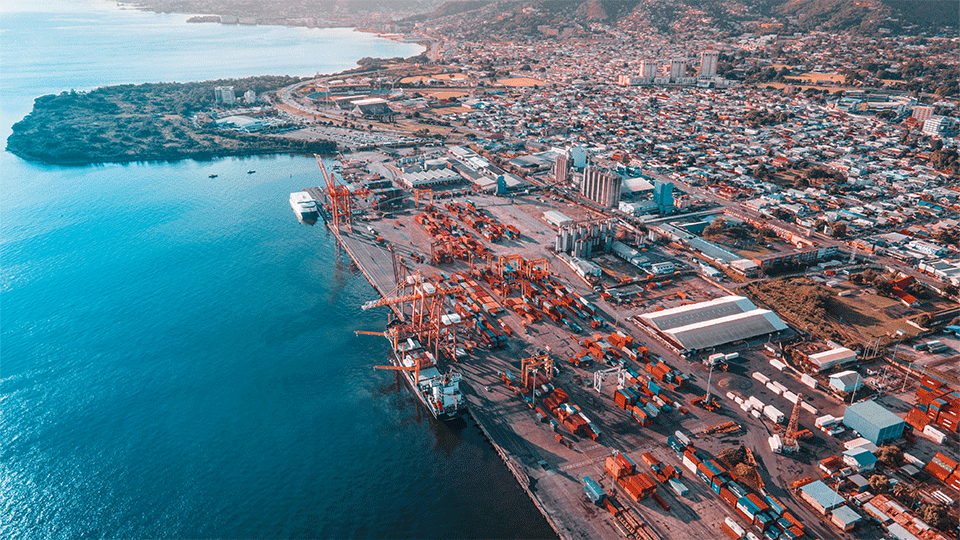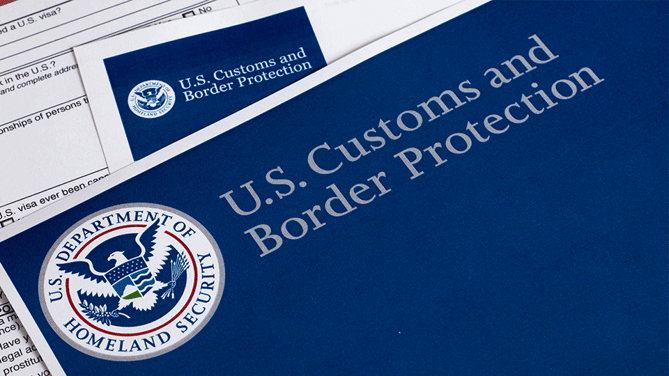
International shipping can feel really complicated sometimes, especially if you’re new to this process. Formulating a transportation concept for an international shipment — whether it’s cross-border or around the world — requires expert knowledge and oversight.
Without the right expertise in your corner, there are several places in your freight’s journey where delays can happen. International seaports are one of these chokepoints.
Today, it’s estimated that nearly 90 percent of the goods exchanged through international trade are transported — at one point or another — via marine vessels.
Keeping this in mind, it’s fair to assume your supply chain has been touched, in some form or fashion, by international commerce and, by extension, the ports themselves.
Usually, when shipping internationally, you can’t avoid interacting with ports. That’s why it’s crucial to understand what’s expected of you when you do.
Even though an enormous number of shipments travel through the U.S.’ nearly 400 international ports every year, it’s up to each company — and their freight forwarder (where applicable) — to navigate this process.
Unfortunately, since picking up freight from a port is a unique exercise, some companies struggle to arrange their pickups. In turn, these companies have trouble upholding the commitments they’ve made and completing their shipments on time.
Anderson Trucking Service (ATS) has four major operating divisions, each of which has been picking up freight from international seaports for decades. As such, we have a well-rounded understanding of the intricacies accompanying these shipments and how to navigate them efficiently.
To help you avoid future mishaps, and ensure your port pickup goes smoothly, this article will list five important things to understand when making these arrangements.
These five things are:
- Finish customs clearance before your estimated loading date
- Your truck driver needs the proper credentials
- Understand when your last “free” day is
- Most ports require pickup appointments
- Depending on your cargo, a crane appointment/rental may be needed
1| Finish Customs Clearance Before Your Estimated Loading Date

Although it can feel kind of harrowing when you’re first introduced to it, the U.S. customs clearance process when importing freight from another country is relatively straightforward.
While your customs broker should advise you through this process, here is an outline for clearing U.S. customs in six steps.
It’s really important to ensure that imported cargo finishes customs clearance prior to its projected pickup day/time. Since clearing U.S. import customs generally takes 24-72 hours from beginning to end, starting this process too late will lead to significant delays.
If a truck driver shows up at a port for their pickup appointment but isn’t cleared to haul cargo out of it, expect your expenses to rise too — the truck driver will need to be paid a layover fee for every day they have to sit and wait.
2| Your Truck Driver Needs the Proper Credentials
To take freight away from an international port, truck drivers need to have the correct credentials. While the specific credentials drivers need will vary situationally (we encourage you to pursue this information as soon as you know your port of entry) the two common credentials most drivers will need are:
- A Transportation Worker Identification Credential (TWIC) card
- A Uniform Intermodal Interchange and Facilities Access Agreement (UIIA) certification
What is a TWIC Card?
A Transportation Worker Identification Credential (TWIC) card is a credential the Transportation Security Administration (TSA) requires workers seeking access to U.S. maritime facilities to hold. This rule, which was established under the Maritime Transportation Security Act, applies to every truck driver picking up or delivering freight to a seaport.
Without a TWIC card, truck drivers won’t be permitted access to the port without a certified escort. To avoid issues, however, it’s easiest to ensure the driver handling your pickup has a TWIC card.

What is a UIIA Certification?
The Uniform Intermodal Interchange and Facilities Access Agreement (UIIA) is an interchange agreement that approves all participating motor carriers to move the containers of each participating equipment provider — namely, container leasing companies and vessel carriers.
Through the UIIA, equipment providers keep track of their assets using Radio-Frequency Identification (RFID) tags and smart labels — scanning them each time a container enters or exits a port location.
If you’re importing containerized freight, your trucking company will (in all likelihood) need to be UIIA certified in order to haul your cargo away from the port. This is important to verify as it will prevent delays — which can be especially expensive when shipping internationally.
Luckily, if you’re using a carrier for drayage, it's safe to assume they have the necessary credentials.
3| Understand When Your Last “Free Day” Is
When it arrives at the port, every shipment is given a set time period during which it can sit at the port for free. While this timeframe changes from one situation to the next — and each port sets its own limits — for container shipments, expect to receive between two and seven calendar days of free time on average. For breakbulk or Ro/Ro shipments, expect to receive between 10 and 15 calendar days of free time on average.
Following your last “free day,” port detention charges begin — levied on a daily basis until your shipment is picked up. After a while — at the port’s discretion — these detention fees increase, creating a compounding effect after a matter of days.
As you’re arranging your freight’s pickup, make sure you understand how much time it will be allowed to sit at the port before detention begins. This will help you avoid these fees, stick to your budget and keep your supply chain running smoothly.
4| Most Ports Require Pickup Appointments
This point is, perhaps, the most important. You see, like a domestic shipment, almost every load hauled out of a port will need to schedule an appointment to do so. Since these locations have so many shipments flowing to and from their entrances, port workers, like stevedores, are constantly busy.
For this reason, pickup appointments need to be scheduled in advance. Be sure to work alongside your transportation provider when making this arrangement to ensure you’re on the same page.
When your pickup date arrives, budget 6-8 hours for loading at the port and expect delays; although ports aren’t as congested as they were in 2021-22, delays are common at the port — especially at the busiest ones.

5| Depending on Your Cargo, a Crane Appointment/Rental May Be Needed
For companies that are shipping out-of-gauge, breakbulk cargo of a certain size, crane appointments/rentals may be needed. In these instances, your freight will need to schedule a slot to be crane-loaded onto your trailer. This is either done by port workers or by a third-party crane company.
Depending on the volume of shipments with similar requirements, getting a crane appointment can be difficult. For this reason, you’ll want to make these arrangements far in advance of your loading date and verify these details with your transportation provider.
Nothing moves last-minute at the port. Since these larger shipments require more specialized handling and equipment, it’s even more important to be “on the ball” when arranging their transport.
Avoid Port Issues Entirely By Using a Freight Forwarder!
There’s a lot to think about whenever you ship freight internationally. Handling all of these arrangements on your own isn’t impossible. Now you know five of the most important things to keep in mind when making pickup arrangements for cargo at a U.S. port. This should help you in the future.
That said, the first few times you tackle this, there will be growing pains. This is a complex process and issues will come up.
For this reason, many companies decide to trust their international shipments to a freight forwarder. Since these companies work in the international transportation sphere every day, they have existing relationships with the best carriers across the trucking, rail, drayage and maritime industries. These relationships, coupled with their expertise, allow a great forwarder to manage the start-to-finish transportation of their customer's freight.
However, like anything else, handing your cargo over to a freight forwarder has its downsides.
So you can decide whether adding a freight forwarder to your supply chain is worth pursuing, check out this article where we break down the pros and cons of using one and provide some tips for choosing yours.
Finally, ATS takes pride in helping people like you navigate their supply chains. To do so, we provide a robust suite of domestic and international transportation services (including drayage and freight forwarding). If you’d like some help with your next shipment or would like to talk to one of our transportation professionals, don’t hesitate to contact us here.




